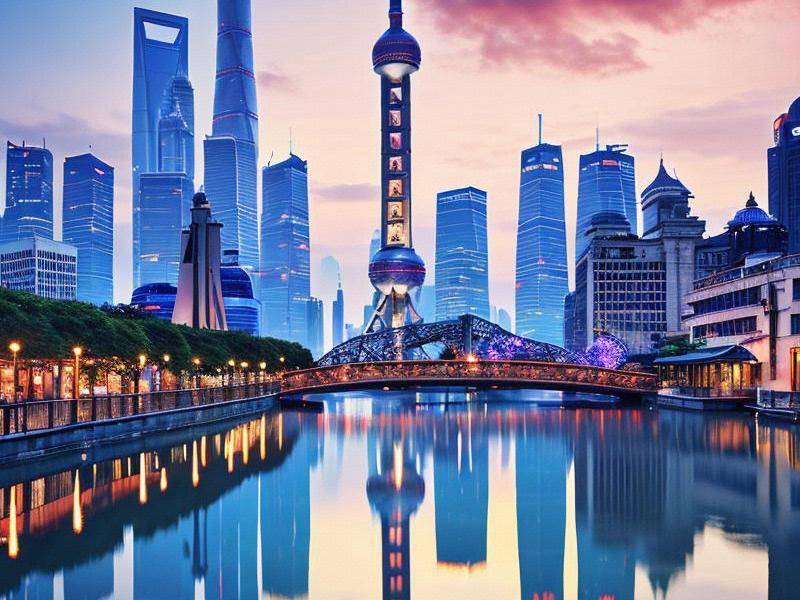Shanghai: A Dynamic Metropolis Shaping the Future of China and the World
⏱ 2025-04-22 00:12 🔖 阿拉爱上海千花网
📢0℃

Nestled along the eastern coast of China, Shanghai is not just a city; it's a living, breathing testament to the nation's meteoric rise on the world stage. Over the past few decades, this vibrant metropolis has transformed from a modest fishing village into a global powerhouse, setting new benchmarks in urban development, economic innovation, and cultural exchange.
The skyline of Shanghai is a visual symphony of architectural marvels, each structure telling a story of the city's relentless pursuit of progress. The iconic Oriental Pearl Tower, with its shimmering spheres, once stood as a solitary symbol of the city's ambition. Today, it is but one of many high-rises that pierce the heavens, including the futuristic Shanghai Tower, which, at 632 meters, is the tallest building in China and the second-tallest in the world.
These architectural achievements are not merely symbols of prestige but also reflect the city's commitment to sustainable urban development. Shanghai has been at the forefront of integrating green technologies and smart city solutions into its urban planning. The city's extensive network of public transportation, including the world's first maglev train, demonstrates its dedication to reducing carbon emissions and enhancing the quality of life for its residents.
Economically, Shanghai is the engine room of China's economy. As one of the country's four municipalities directly under the central government, it enjoys a unique status that allows it to implement policies and attract investments with ease. The city's strategic location at the mouth of the Yangtze River makes it a crucial hub for trade and commerce, connecting the vast hinterlands of China with the rest of the world.
The Port of Shanghai, the busiest container port in the world, is a testament to the city's importance in global trade. It handles millions of containers annually, facilitating the movement of goods between Asia, Europe, and beyond. This maritime gateway has played a pivotal role in China's integration into the global economy and has made Shanghai a key player in international trade networks.
上海龙凤论坛419
Beyond its economic might, Shanghai is a cultural melting pot, where the old and the new coexist in harmony. The Bund, with its historic colonial architecture, offers a glimpse into the city's colonial past, while the adjacent Pudong district showcases the cutting-edge skyscrapers of today. This juxtaposition of history and modernity is a hallmark of Shanghai's identity.
Culturally, Shanghai is a city that thrives on diversity. It is home to a vibrant arts scene, with galleries, theaters, and music venues that celebrate both traditional Chinese culture and international art forms. The city's fashion industry is equally dynamic, with Shanghai Fashion Week attracting designers and fashion enthusiasts from around the globe.
The influx of multinational corporations and international organizations has further enriched Shanghai's cultural fabric. This has led to a cosmopolitan lifestyle, where residents enjoy a wide range of cuisines, from Sichuan hotpot to French haute cuisine, and access to global brands and services.
Shanghai's global influence extends beyond its economic and cultural achievements. The city has been a pioneer in international cooperation and diplomacy. The annual China International Import Expo (CIIE), hosted in Shanghai, is the world's first national-level expo focused on imports, showcasing China's commitment to opening its market and promoting global trade.
上海贵族宝贝自荐419
The city also plays a crucial role in international forums and organizations. Shanghai Cooperation Organization (SCO) summits, which bring together leaders from Central Asia, Russia, and China, are held in Shanghai, highlighting the city's importance in regional and global politics.
However, the rapid pace of development in Shanghai is not without challenges. The city faces issues such as housing shortages, environmental concerns, and the need for sustainable urban planning. Addressing these challenges requires innovative solutions and a commitment to balancing economic growth with social and environmental responsibility.
Shanghai's government has been proactive in implementing policies to tackle these issues. Initiatives such as the construction of affordable housing, the promotion of green spaces, and the adoption of smart city technologies are aimed at creating a more livable and sustainable urban environment.
The city's residents also play a vital role in shaping the future of Shanghai. Their entrepreneurial spirit, cultural creativity, and dedication to community development contribute to the city's dynamic character. Shanghai is a city that inspires its people to dream big and work hard to achieve those dreams.
上海私人品茶
Looking ahead, Shanghai is poised to continue its journey of transformation and innovation. The city's vision for the future includes becoming a global center for science and technology, a hub for international finance, and a leader in sustainable urban development.
The Chinese government's Belt and Road Initiative (BRI) further underscores Shanghai's strategic importance. As a key node in the BRI, the city is expected to play a pivotal role in connecting Asia with Europe and Africa through infrastructure development and trade facilitation.
In conclusion, Shanghai is a city that embodies the spirit of China's modernization and its aspirations for a brighter future. Its rapid urban development, economic prowess, cultural vibrancy, and growing global influence make it a fascinating subject of study and admiration.
As Shanghai continues to evolve, it serves as a model for other cities around the world, demonstrating how urban centers can balance economic growth with social and environmental sustainability. The city's story is one of resilience, innovation, and a relentless pursuit of excellence, making it a true marvel of the modern era.
Shanghai’s Gilded Lounges: Where Art Deco Opulence Meets AI-Curated ExtravaganceThe Great Shanghai Convergence: How the Mega-City Is Reshaping the Yangtze Delta Region"Code and Qipao: How Shanghai's Women Are Rewriting the Rules of Modern Femininity"The Yangtze River Delta Megaregion: Shanghai's Bold Vision for Integrated Urban Future《海派丽人启示录:上海女性审美变迁与都市文化演进》弄堂里的"新主人":上海城市更新中的社区共生与文化新生Shanghai's Nocturnal Revolution: How the City Redefines Luxury Entertainment《从"百乐门"到"数字包厢":解码上海娱乐会所的百年进化史》文章开始Shanghai's Beauty: A Blend of Tradition and ModernityShanghai 2045: The Living Laboratory of Urban Futurism

